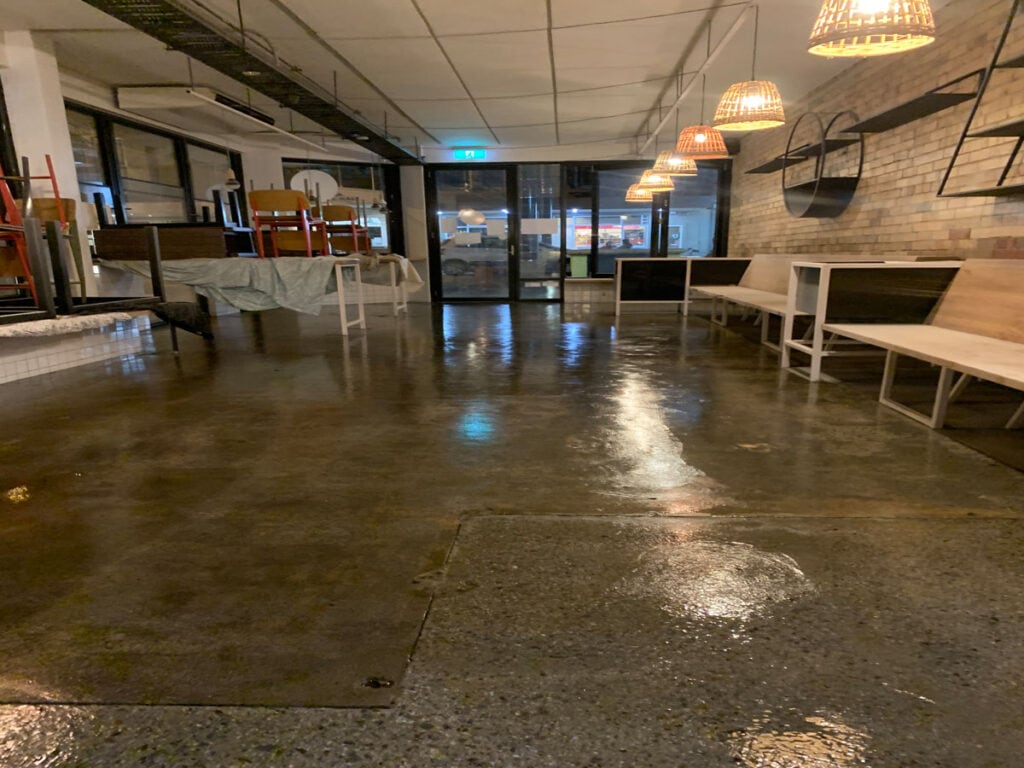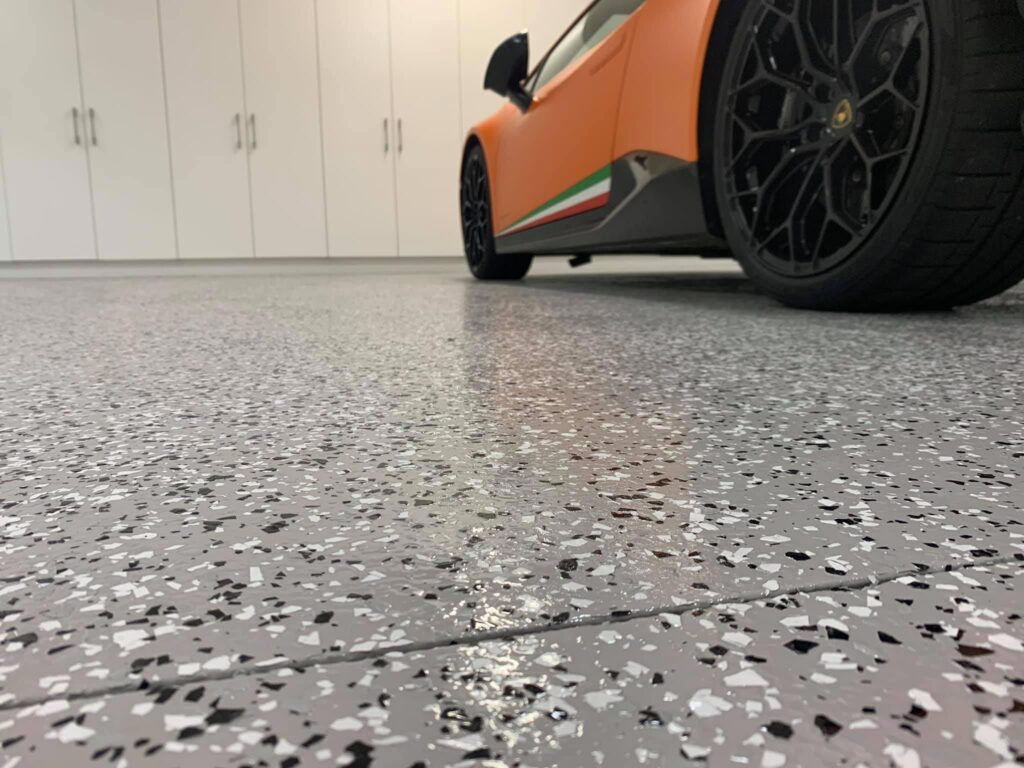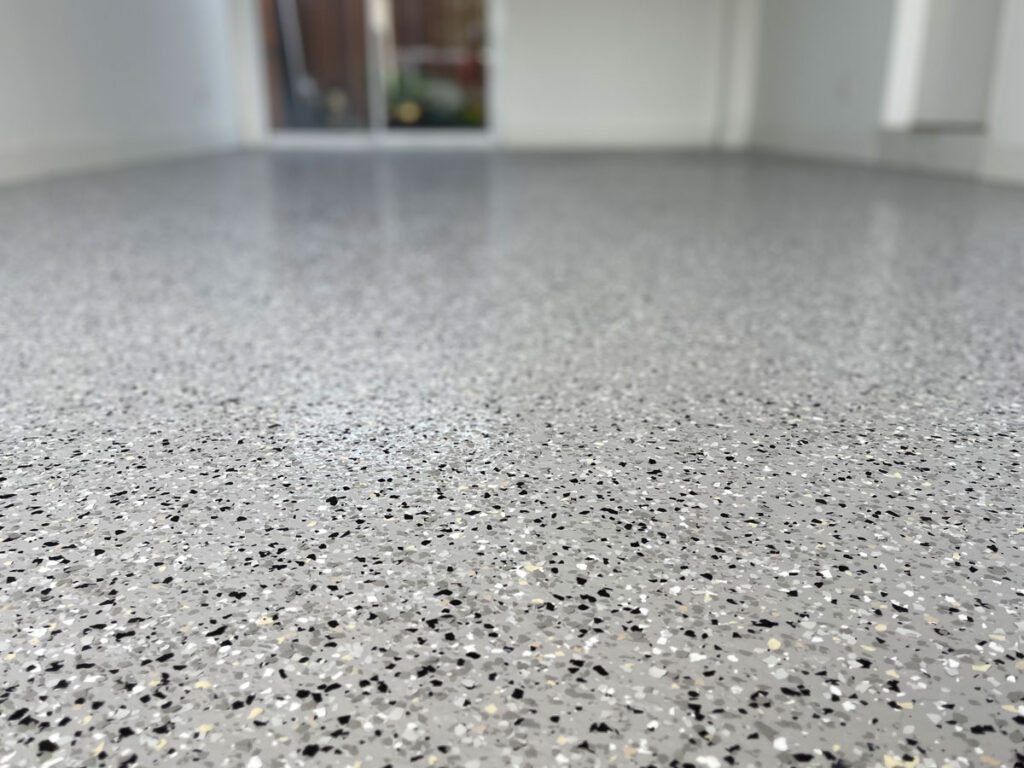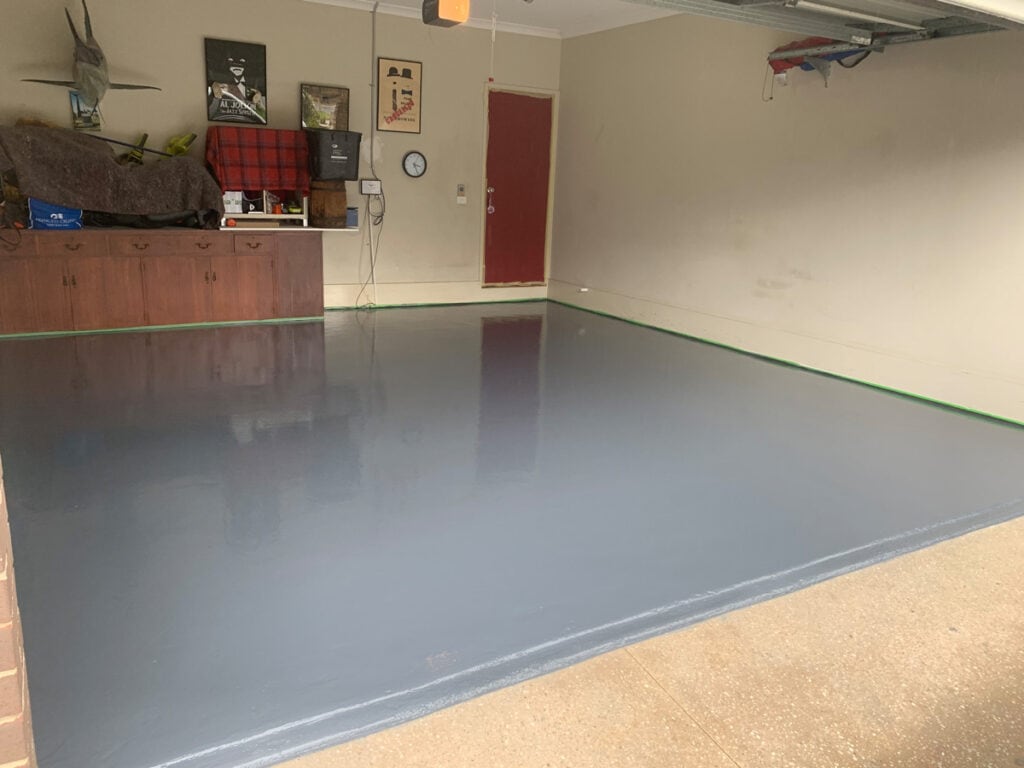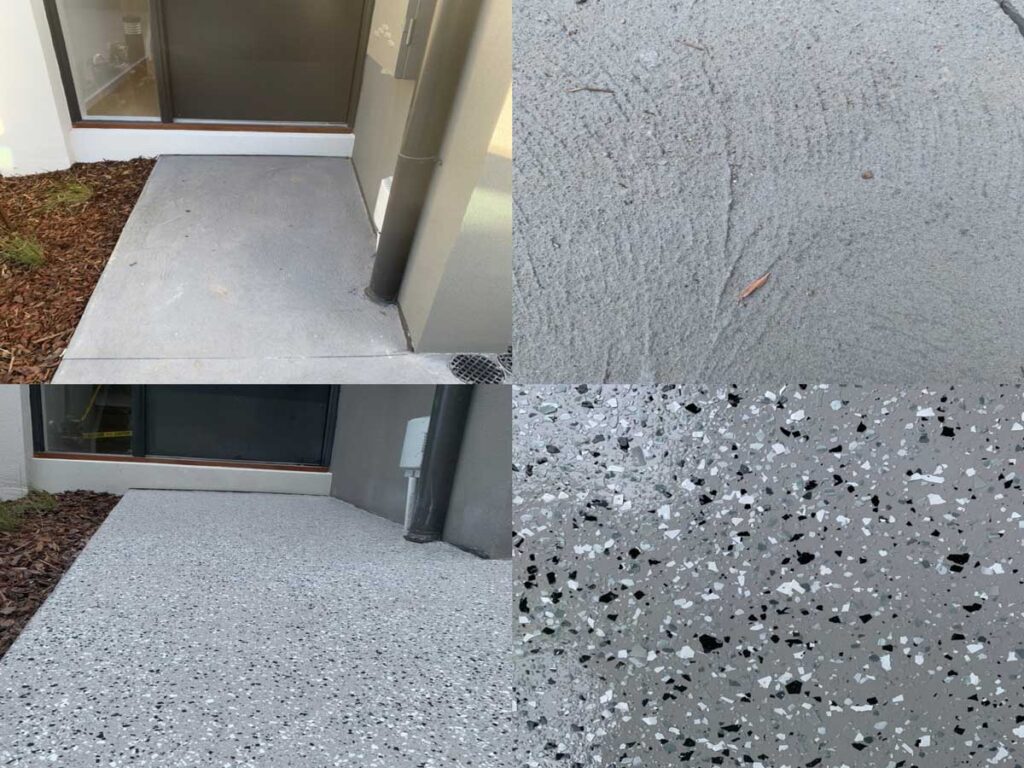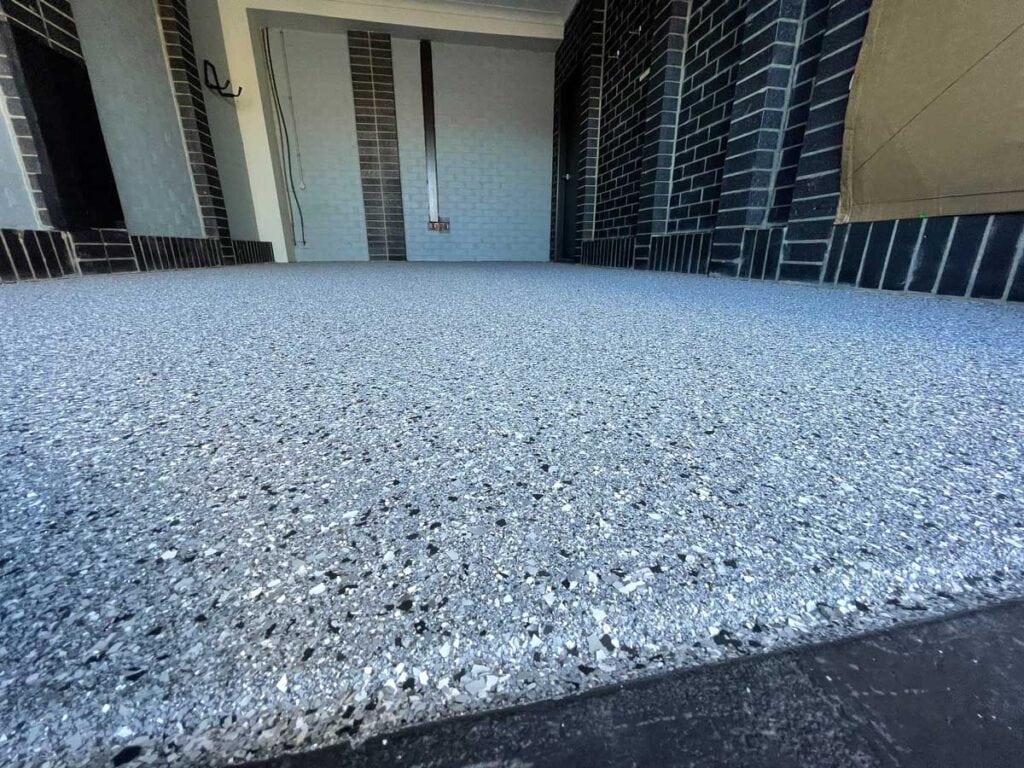One of the widest spread rumours about epoxy flooring is that they are short term flooring systems that need constant refinishing.
This, however, is completely untrue and needs to be exploited for the lie that it is!
Today, we will be looking at how long epoxy flooring can last when professionally installed and properly maintained.
Have you been grown accustomed to dull and less attractive flooring systems? If so, it is the right time to give a dramatic transformation to your floors. As floors are one of the first things that your visitors will notice in your home, they must have catchy and luxurious features. With this, epoxy floors are the best option for you.
Epoxy floors are a convenient and smart option for long-lasting flooring for both residential and commercial owners. But, when it comes to durability, are our epoxy floors worth your investment?
How long do they need to be replaced? If you are thinking about installing epoxy coating on your floor, these are questions that you should consider.
Every type of flooring has pros and cons. This is especially true depending on what location you will be putting it in. Different types of flooring work better for different spaces and locations. It would be best if you were sure that you picked a floor that will fit nicely with the needs of your specific space.
Spaces with heavy foot traffic need durable flooring and can withstand the elements they will encounter daily. This may cost more money initially, but it will end up saving you money in the long run.
You will save money on repairs and replacement with a durable, strong floor with little maintenance and cleaning. If you own an auto shop and need something durable for your flooring, you should consider polished concrete!
It is durable and low maintenance, which is perfect for this location! You may be likely to consider epoxy flooring, which is common in some garages. Here are some reasons you should avoid garage floor epoxy.
FAQs About Peeling Epoxy Floors
How do you fix peeling epoxy floors?
If your objective is to make the floors look brand-new, you will need to remove the existing coating that is peeling or lifting. One method of doing this is to use a methylene chloride type paint stripper to soften the existing finish, followed by a 3-inch scraper or scrape away.
Why is my epoxy peeling?
Peeling Floors: Several factors can cause the epoxy to peel from your floors. The most common reason this occurs is improper preparation of the epoxy or applying the epoxy when the temperature is too hot or cold or the humidity is too high. In addition, the floor must be clean and free of oil, grease and debris.
What should you not put on an epoxy floor?
You need to make sure not to use any products containing citrus or vinegar, not even mild white vinegar typically used for cleaning. Because citrus and vinegar will remove the epoxy coating’s glossy finish, you’ll also want to avoid using any soap-based cleaners.
How do you fix peeling floors?
If just a few corners have started peeling, you should be able to fix it without replacing the entire floor. Put aluminium foil over the tile and heat it with an iron. This allows the tile to become flexible and makes the adhesive softer.
Why is my floor peeling?
When moisture is the primary culprit of the peeling, the floor can be repaired using a combination of sanding, wood repair filler, and other options. However, when the floor’s finish begins to peel due to traffic or everyday wear and tear, you can often refinish the floor to make it look brand new.
Why Epoxy Floors Became a Popular Choice for People?
Epoxy flooring is highly tolerant of weight and regular usage. This is one reason why it’s a common choice for industrial, commercial and manufacturing industries. These types of environments face great deals on floor traffic every day. That’s why owners should carefully choose the type of flooring or material to use. With this, epoxy flooring comes into play. As a result, they can maximize their budget while ensuring high productivity. Epoxy floors are not just affordable but easy to maintain as well.
What are the benefits of epoxy?
- Offers a seamless finish (without grout lines).
- Highly resistant to wear and tear.
- Water-resistant.
- Clean and hygienic.
- Extremely resistant to dirt and oils.
- Cost-effective.
- Large range of designs and colour combinations to choose from.
What’s the process for applying the epoxy floor?
The concrete surface is ground back slightly to open the pores of the concrete
A sealer is applied to the ground concrete
A base colour coat is applied (flakes spread through the wet base coat if required)
Two coats of Polyurethane clear are added.
Bad concrete or bad application?
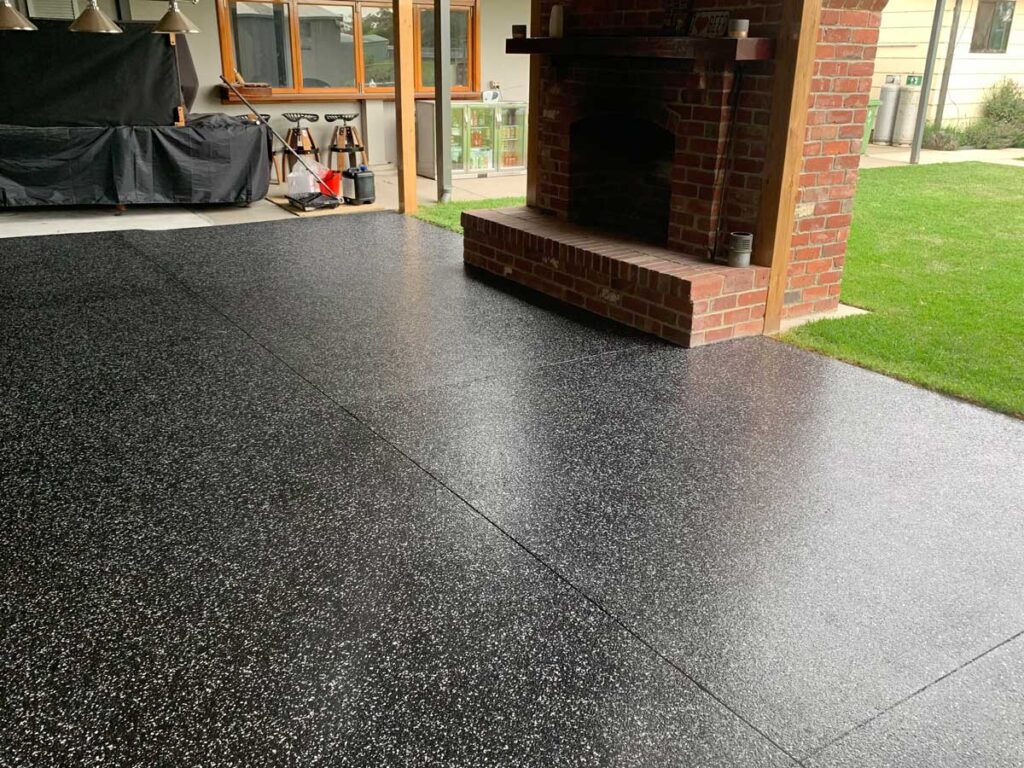
Peeling epoxy could be the fault of an inexperienced, unskilled epoxy applicator – or it could be the fault of poor concreting practices. Here’s how to tell the difference:
- If the coating comes off and has clear epoxy on the back, the epoxy applicator is likely to blame. This indicates an adhesion issue and could be attributed to poor preparation, along with a multitude of missteps and mistakes.
- If the coating comes off and has concrete stuck to it (see photo above), the concrete is likely not to an acceptable standard. This indicates that the epoxy coating is stronger than the concrete.
Is the epoxy floor very strong? What can damage it?
Yes, an epoxy floor is very strong and durable but can be damaged by mechanical force or the substrate or concrete floor below. Dragging a heavy object with steel legs across it, for example, would be damaging. An epoxy floor can succumb to scratching like ordinary concrete is but properly looked after. It can be exceedingly durable and will last many years looking beautiful.
Why is my concrete so weak?
If the above test proved that it’s the concrete – and not the epoxy coating – at fault, you might be left wondering, “Why is my concrete so weak?” Weak concrete that isn’t to code can be caused by several factors, one of the most common being overwatering the concrete before it’s laid. The process of watering down concrete causes the “fines” – the finest particles – to rise to the surface, creating a weak crust.
This type of concrete requires about 5mm of grinding to be made strong, which might not sound like much, but it’s a lot of work.
The concrete truck leaves the batch plant, and all quality checks are in place. It’s, says, 20MPa and full of all the ingredients that suggest that this is a quality batch. Sometimes, the incorrect use or application of accelerants and retardants could also contribute to poor quality concrete. There are many of these products, and keeping track of what was used and how much, is extremely difficult.
In our experience, overwatering the concrete is common when it turns up to the site. It becomes easily workable, and who would blame someone for making their work easier? However, this has ramifications and not necessarily with the concrete, but with the coating and, importantly, the preparation required to coat adequately.
That being said, over time, the concrete can also degrade.
We see this in both new and old homes, but it is more common in new slabs. An area of quality checking failure sometimes lies with the builder’s failure to manage and supervise the contractors they use yet defend them when issues arise. We believe that helping builders understand the implications of poor concrete is part of our obligation to the industry and our valued customers.
Factors that influence how long an epoxy coating lasts
Many factors influence an epoxy coating’s lifespan:
- The Strength of the Concrete Flooring Itself: The initial layer of concrete is the base of your floor and is the first factor that will determine the lifespan of your epoxy floor coating. Usually, concrete floors in industrial or commercial establishments have a minimum of 3000 PSI. A concrete floor with a 2500 PSI or less strength is not recommended. If needed, densifiers can be added to help with this issue.
- Surface Preparation: One of the main prerequisites of a well-performing epoxy flooring is how thoroughly the surface was prepared before application. The surface should be free from dust, oil or other liquids and have no damage. (Here are the elements a proper surface preparation process entails.)
- The thickness of the Epoxy: An epoxy coating can range from 400 to 1,000 microns on industrial floors (that is, between 0.4 mm and 1 mm). The thinner your epoxy coating is, the sooner it will wear down and need replacement. In some industrial settings, the thickness of the epoxy system can sometimes exceed 1,000 microns.
- Quality of the Topcoat: Often, a floor coating contractor will recommend the epoxy has a urethane topcoat applied to resist abrasion and scratches. A thickness of 50 microns or more is recommended in industrial floors.
- The extent of Traffic: High levels of pedestrian traffic can wear down even a well-installed epoxy coating. Forklifts and other wheeled vehicles will take their toll as well. If your facility is subject to heavy traffic, consider an additional topcoat.
- Exposure to UV Light: Epoxy floor coating has very poor UV resistance. The binder will chalk, turning powdery when exposed regularly to sunlight. This is why epoxy coatings are not typically recommended for exterior applications.
Why do epoxy floors peel?
Epoxy is a very tenacious and tough coating to remove when applied properly. That is why there are so many successful, long-lasting epoxy garage floor coatings that people love. Just about every problem you may have heard about epoxy flooring can be avoided by paying attention to the details. With that in mind, we have listed the seven most common reasons for epoxy peeling up, along with the solutions to avoid them.
Poor Surface Profile
As we stated earlier, a poorly prepared concrete surface is the main culprit to epoxy peeling. The number one problem associated with that is a bad surface profile.
The surface profile is the roughness and porosity of the concrete that allows for the mechanical bond of the epoxy. To obtain the correct surface profile for epoxy, you need to acid etch the concrete at the very minimum.
Grinding the concrete is the preferred method, but it’s not always feasible for the average DIY install. You can read more about acid etching versus grinding here.
Profiling the concrete exposes the pores so that the epoxy can sink in a little to get the bite it needs to adhere to. If not done correctly, the epoxy will not adhere well and can peel at some point after application.
Once the concrete is profiled correctly, it should have a lighter appearance and a rougher texture to it that is similar to 100 grit sandpaper. Test it by dripping some water onto the concrete in various areas. The surface should immediately turn dark and absorb the water in less than a minute.
Beware of the clean and etch solutions with the lesser expensive, single coat garage floor epoxy kits.
These solutions are often not effective enough to create the proper surface profile. This is because these solutions generally consist of citric acid crystals. The main reason for using citric acid by these manufacturers is that it is safe for the environment, and it is much more difficult to harm yourself if used improperly. We have more info here if you are concerned about etching with safer alternatives.
The problem, however, is that citric acid is the weakest of the concrete acid etching solutions, and it will not profile a hard troweled or machine troweled surface effectively. It does not work well on extremely dense concrete either.
Another problem with these citric acid products is that they are touted as a cleaning solution. However, if these solutions are applied to a dirty concrete surface, they do not work well at cleaning and etching the concrete simultaneously.
Moisture
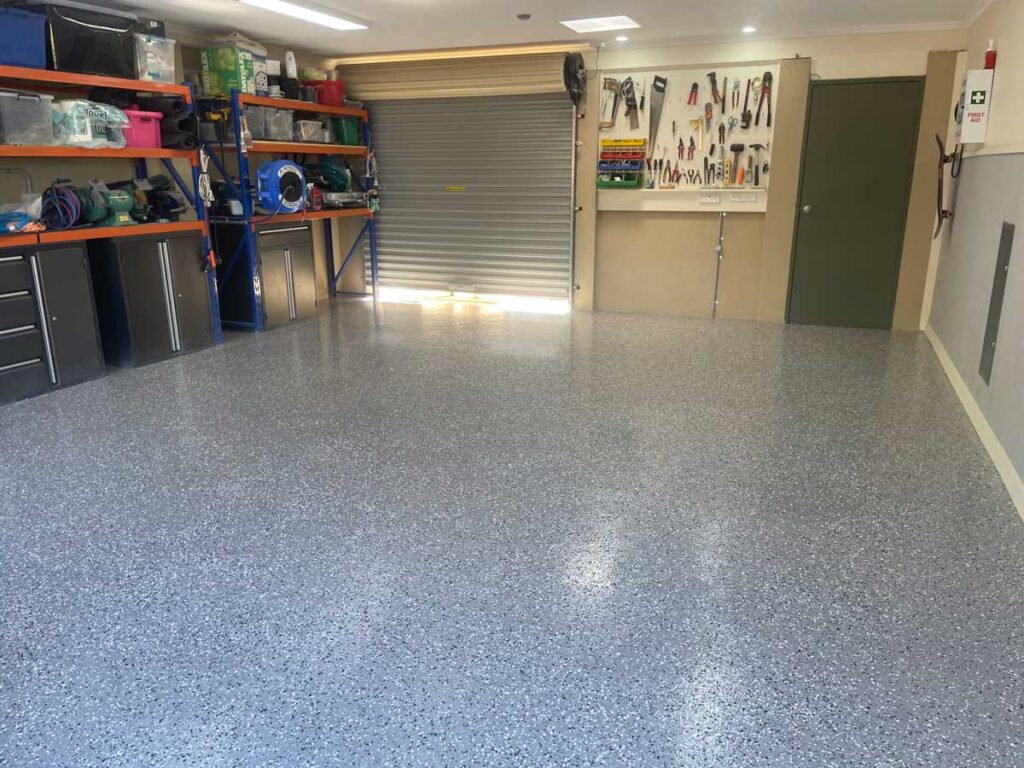
The second most common problem associated with the peeling of epoxy garage floors is moisture in the concrete.
Water vapour cannot pass through epoxy. Suppose you have moisture under any part of your slab below grade. In that case, the hydrostatic pressure created from water vapour trapped under the epoxy coating can create enough force to lift the epoxy right off the surface. Inspect your floor for signs of moisture.
Efflorescence is the very first sign that you may have a moisture problem. So are dark spots on the floor. If your slab is below grade on any side, you must do a simple moisture test before starting an epoxy floor project.
Oil And Contaminants
Once you have achieved the correct surface profile for epoxy, it’s important to check that any oil stained areas that were previously cleaned are absorbent and not repelling water.
You will want to check these areas with the water drop test. It’s not uncommon for a previously oil-stained area to be darker in colour than the surrounding concrete.
As long as it absorbs water, it will absorb epoxy and provide good adhesion. Other contaminants such as silicone from tire dressing products and polymer compounds that leach out of warm tires will not allow the epoxy to adhere. Be sure to perform a water drop test around the areas where the car tires sit. Acid etching will not remove silicones and tire polymer residue. If your acid-etched the concrete and these areas do not pass the water drop test, you will need to grind the concrete to remove the residue.
Acid Etch Residue On The Surface
When your acid etches your garage floor, the acid solution works by reacting with the free lime in the concrete.
This causes a breakdown of the calcium at the surface, which exposes the concrete’s open pores.
This calcium is then deposited onto the surface in a very fine white dust. Many epoxy floors had peeled up because this fine white dust was not effectively removed before the epoxy was applied.
Because the dust is so fine, it likes to stick to the irregularities in the surface and can be difficult to remove. If epoxy is applied over concrete with this fine white dust, the epoxy sticks more to the dust and not the surface. It will eventually peel up, exposing the white dust on the underside of the peeled epoxy coating.
The amount of dust left on the surface after acid etching is dependent on how much free lime was present on the surface of the concrete to begin with and how well the floor was neutralized and flushed afterwards. Never let the floor start to dry during the acid etching process, and use liberal amounts of water when flushing the surface. It helps to use a deck brush to scrub the surface as it is flushed lightly. It can be removed if you end up with this white residue, but it may take multiple scrub downs to get it all off the surface.
A pressure washer works best. If you don’t have one available, wet the floor down in sections and use a TSP and hot water solution to scrub the surface. Flush it well with a high-pressure nozzle and move on to the next section. It will come off, but it may take a few tries.
Applying a successful epoxy garage floor coating that does not peel truly is difficult. It just requires some attention to detail and knowledge of how your garage floor concrete should be prepared and tested before application.
Except for moisture issues, most of these common problems with epoxy peeling can easily be avoided by grinding the garage floor. However, whether grinding your floor or acid etching, you should have a successful epoxy coating that will not peel after application if you pay close attention and follow these tips.
Conclusion
Remember that the less expensive garage floor epoxy kits will eventually wear out in high traffic areas. This is not the same as peeling. You will notice that the floor in these areas will become dull, and the concrete will start to show through.
This is a result of abrasion at the surface of the coating and not from peeling. Hot tire picks up is not necessarily a sign of bad floor prep either. Again, the lesser expensive epoxy products can be prone to this no matter how well the floor was prepared. The reason is due to the low solids content of the epoxy and the chemical makeup.
Typically, epoxy flooring lasts 2 to 3 years in heavy traffic. Commercial properties—like garages, restaurants, or factory spaces—with lots of daily foot traffic can expect this experience. However, with proper care and maintenance, your epoxy flooring may last much longer.
- Strong Application Fumes. During the epoxy application process, wet epoxy gives off an unpleasant smell. ...
- Long Curing Time. ...
- Slippery When Wet. ...
- Economical Flooring Choice. ...
- Resistant to Damage. ...
- Weather-withstanding. ...
- Aesthetically Pleasing. ...
- Protects and Decreases Wear & Tear.
Extremely safe – Epoxy is a very safe coating for your hard floors. It's slip resistant, shock resistant, and less abrasive than concrete and other types of industrial flooring. ... It can also withstand heat of up to 200 degrees, making it a better choice than most other types of flooring when it comes to fire resistance.

